
Private Tented Safari Camp Experience in Dambana
Explorer by Mahoora is a highly unique and immersive experience of living with untamed Sri Lankan wildlife inside National Parks and Nature Reserves across the country. Our Private Tented Safari Camp Experience in Dambana escapes you from modern times to live amongst the traditions of indigenous people of Sri Lanka
The Explorer by Mahoora campsite is situated by the side of lake that is beautifully landscaped by nature itself. The evenings are breathtakingly beautiful where pink and purple hues adorn the evening skies. It is a place to lie down or sit back and relax, enjoy an afternoon cup of tea and simply watch the skies turn to dark blue as the birds fly back home saying goodbye to the day.
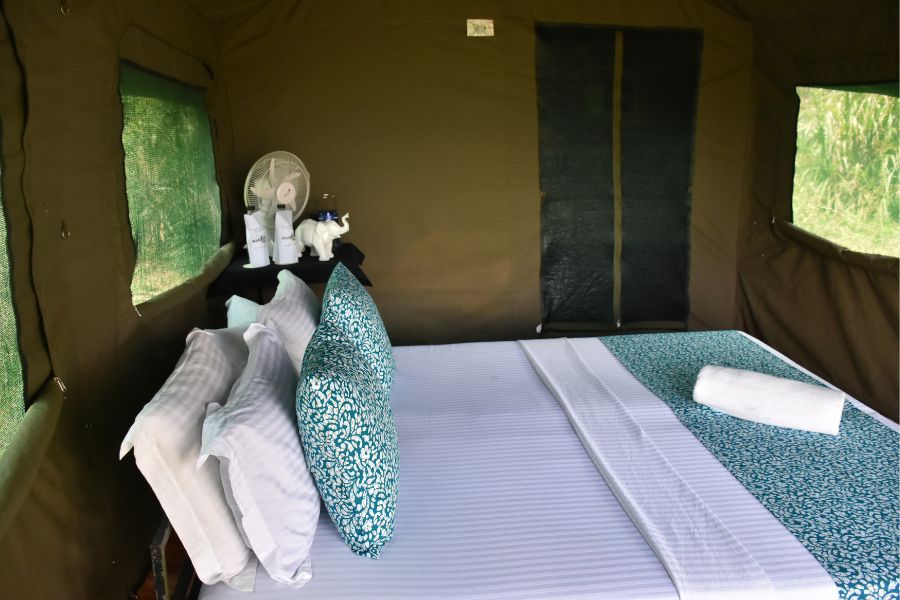
Accommodation
The Explorer by Mahoora Living Experience combines rustic with modern. Enjoy a spacious, tented accommodation (15.6’x 8’) which includes a cosy bedroom, en-suite bathroom with a flushable toilet and complimentary toiletries, as well as a private veranda/ porch outside the tent. Your stay with us will always be carbon neutral.
Dining Experience
Dining too, is an adventure with Explorer by Mahoora at Dambana.
At nightfall, we make your wild dinner experience a little extra special with Kiri Koraha dance by the indigenous community (Veddas). Listen to the campsite come alive with chanting and the beat of the dancers around the campfire, taking you back in time to an era that seems rather impossible to have existed.
Your wild dining is set up within the campsite, and meals are freshly prepared on-site by our executive chef. Menus are deliciously local and carefully designed for your palate, so your culinary journey sweetly complements the rest of your adventure.
Game Drives
Game drives let you explore the Maduru Oya National Park. Jeep safaris let you experience everything from an elephant roaming the tall grass to a range of bird life.
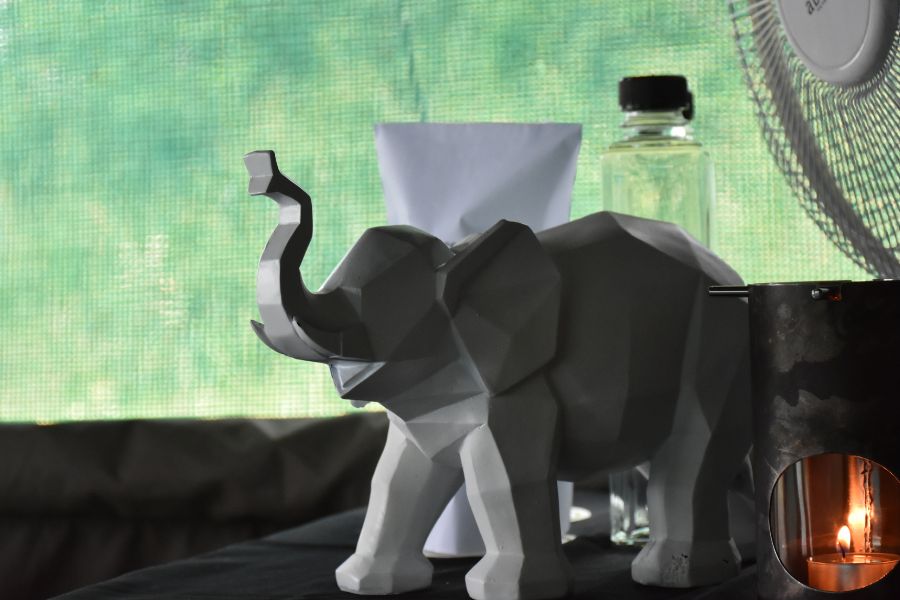
Maduru Oya National park has its unique features that you would come across in the game drive. The abundance of tall grasses hide at times the most gigantic elephants. The Park is untamed but bears evidence of once upon a time life that existed. Dilapidated schools and remnants of buildings can be seen in some places making you wondering as to what life may have been prior to the implementation of the Mahaweli programme.
The Mahaweli Development Programme, a national programme committed to the full development of Sri Lanka’s water resources for irrigation and hydropower, was implemented in 1975. This programme was to last 30 years. Under the Accelerated Mahaweli Programme (AMP) - a revision to the original scheme - 12 projects were undertaken to complete within 6 years, including Maduru Oya.
Maduru Oya was identified as a feasible location to provide irrigation water, in order to settle some 35,000 farming families. The soil was ideal for both paddy cultivation and crop cultivation such as: sugarcane, cotton, pulses, groundnuts, etc.
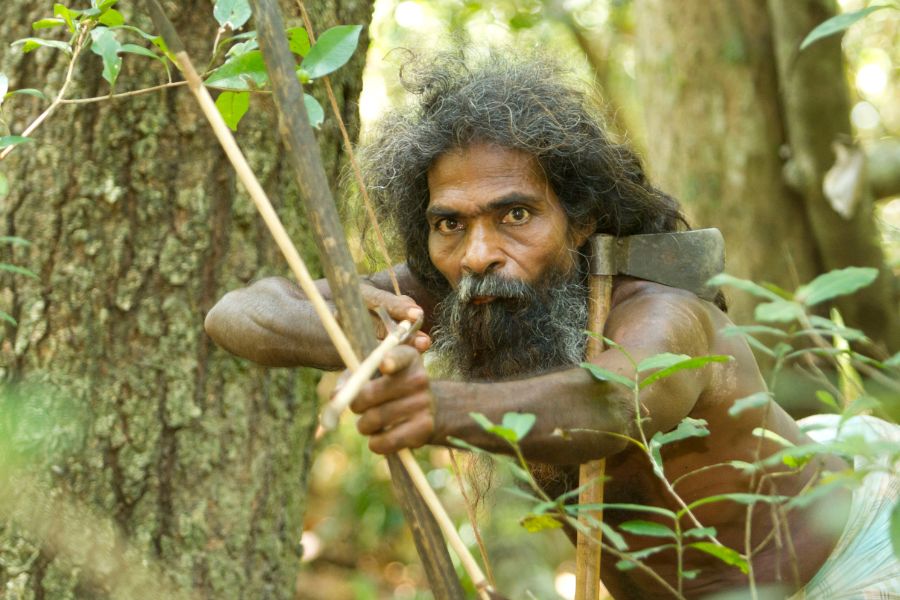
Experiences with Aldi Waasi
Experiences with Aadivasi is not confined to observing their lives. In fact you get to take part with them. These activities will take you back to a time where your imagination will be filled with how people lived amidst nature. Walk in the forests, looking for beehives and yams are novel and exciting. What’s more, you may try your hand at using some of their traditional equipment, bow and arrow and learn to ignite a fire the old - fashioned way.
Game Drives
game drives at maduru oya national parkGame drives let you explore your new home at the Maduru Oya National Park. Jeep safaris let you experience everything from an elephant roaming the tall grass to a range of bird life.
Maduru Oya has its unique features that you would come across in the game drive. The fishing village that is situated in the midst of the Park gives you the opportunity to get first hand experience the way this isolated community lives in the Park. What’s more, you are one of the privileged guests - to take back to the campsite - the day’s catch; whether it be a freshwater prawns or lake fish, so that the chef on site can make a delicious dish for the night.
The game drive takes you through a historical journey as well. A stop over near 3000 year old sluice gates built by ancient local tribes will astound you. Cherish the moment sitting by the side of these historic monuments and savouring a delicious picnic put together by our chef.
Journey further and it will take you to the Wildlife Museum set inside the Park. Numerous and seldom heard stories of the mammoths who roamed the Park, are likely to be revealed.
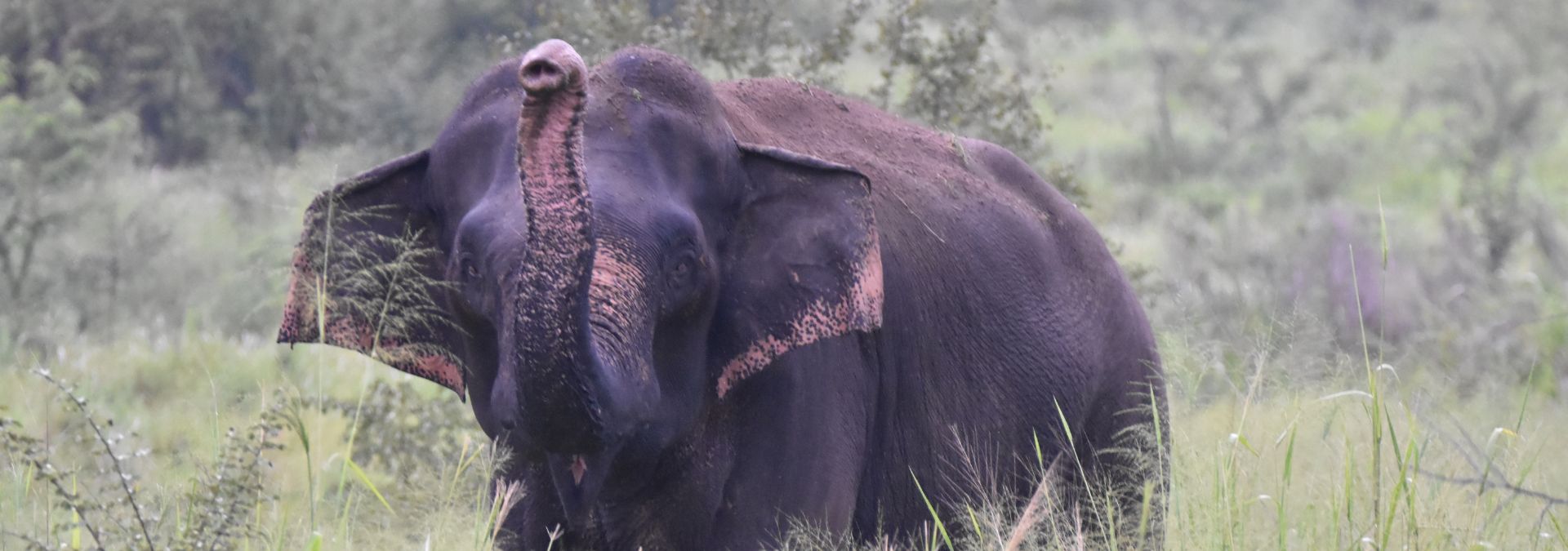
History Behind Maduru Oya National Park
Maduru Oya National Park has a history that spans across thousands of years. History speaks for itself as you see many with your own eyes.
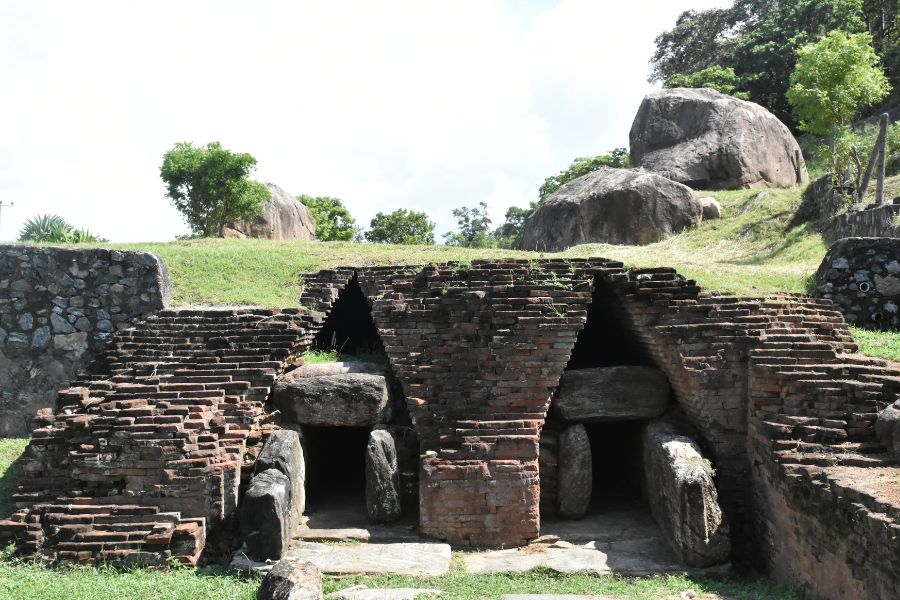
The remains of the brilliance of Nagha (Cobra) Tribe - 3000 years ago
Mahawamsa and Deepavamsa speak of the Buddha’s second visit to Sri Lanka, to settle a dispute between two Nagha kings. The Nagha tribe is said to have been skilled and possessed great expertise in the areas of agriculture and irrigation.
One of the most iconic features of Maduru Oya, is the ancient earthen dam and sluice built there, during the reign of King Mahasena. This dam with a height of 30 feet and a width of 30 feet, is 219 feet long. The dam symbolises the marvelous skills and knowledge of ancient Sri Lankan engineers. Slabs, bricks and meticulous workmanship can be seen even today, at the site of the sluice gates, built back in the 6th century - still standing strong against the test of time, in full grandeur.
The Mahaweli Development Programme, a national programme committed to the full development of Sri Lanka’s water resources for irrigation and hydropower, was implemented in 1975. This programme was to last 30 years. Under the Accelerated Mahaweli Programme (AMP) - a revision to the original scheme - 12 projects were undertaken to complete within 6 years, including Maduru Oya.
Maduru Oya was identified as a feasible location to provide irrigation water, in order to settle some 35,000 farming families. The soil was ideal for both paddy cultivation and crop cultivation such as: sugarcane, cotton, pulses, groundnuts, etc.
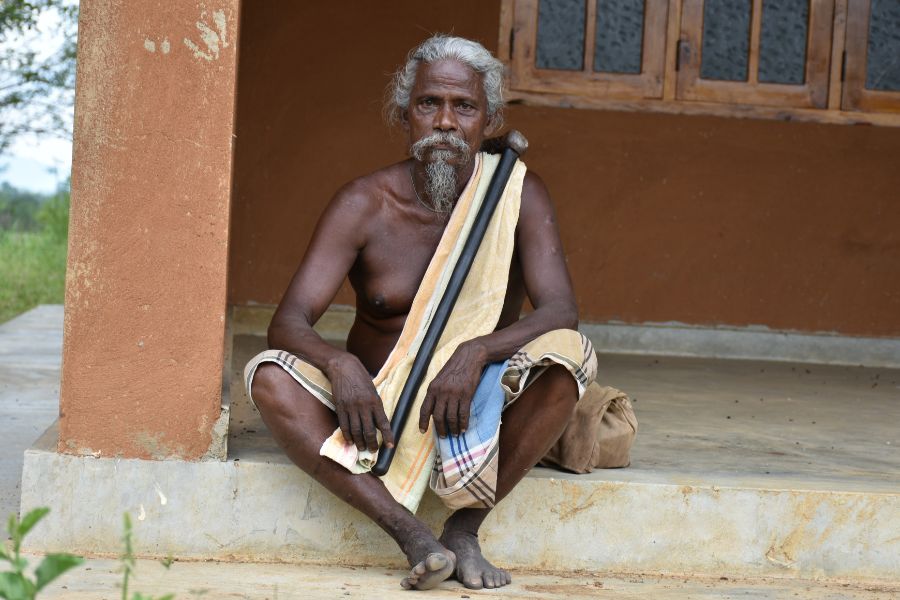
The changing lives of Aadivasi - Veddhas of Henanigala
Henanigala is the home for the relocated veddha (Aadivasi) community that originally hailed from Dambana, a nearby village.
As the Mahaweli development project spread to Maduru Oya in 1983, with the objective of irrigating most parts of Sri Lanka, part of the Aadivasi community from Dambana was relocated to Henanigala.
The community today engages in farming and lead a simple life. You can catch a glimpse of their lives with us as they take you through a forest’s patch and showcase some of their skills. Or you may just get the opportunity to spend time and understand their culture as we invite them to spend a night with us at Explorer by Mahoora campsite.
Communities Around
What you can see, hear smell and touch is endless. Another very exciting and interesting part of the journey you take with us is, we take you to the isolated fishing village inside the Park; Maduru Oya fishing village.
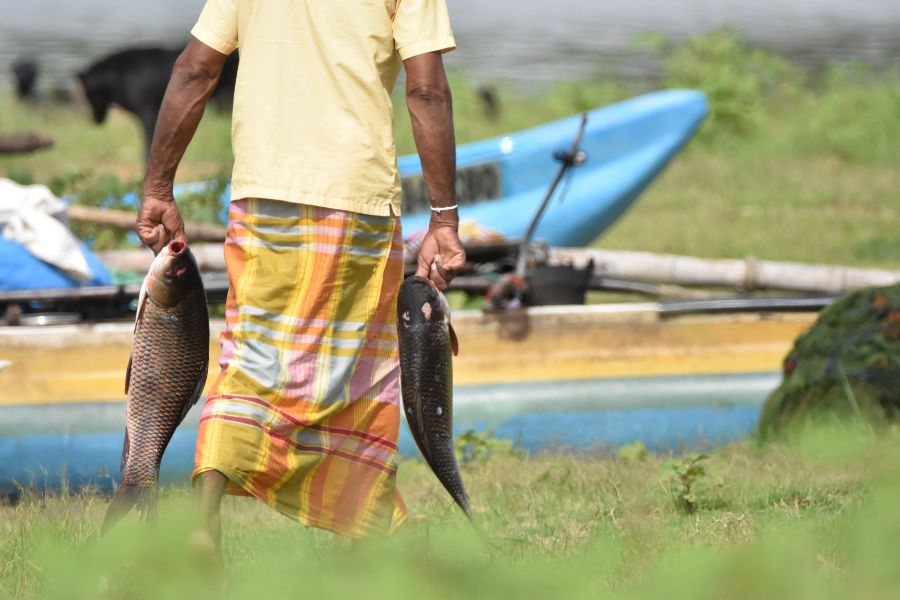
It's the home to a small community of fishing families who embark upon early morning fishing trips hours in the Maduru Oya reservoir. Pastel shade sail boats and canoes steadily anchored on the shore after the morning voyage is eye candy indeed. The relaxed atmosphere in celebrating the day’s catch is unforgettable, You may walk around the shore and have a look at the fresh catch from fish to freshwater prawns - that are as big as lobsters.
What’s more, we may just fulfill your culinary fantasy by taking some to be grilled on the BBQ for dinner.
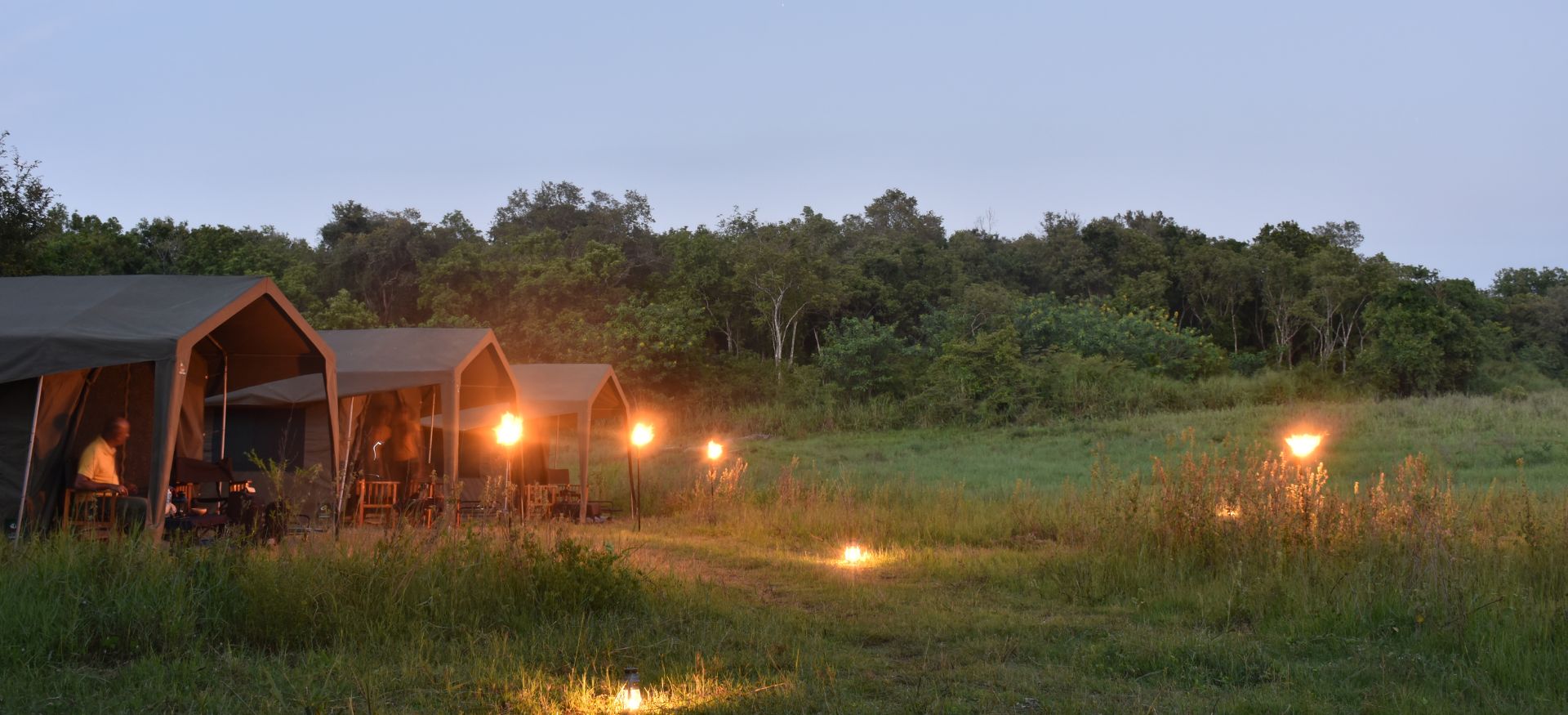
Facts
A tent (15.6’x8’) with accommodation, an en-suite bathroom, and a private veranda/porch
Tented accommodation with raised beds with freshly laundered bed linens and a bedside table along with basic amenities
Fully-sealed tent with ventilation nets
Equipped with a shoe rack and two foldable arm chairs
One rechargeable table top fan is provided in the bedroom
A rechargeable lantern is provided for illumination
The veranda/porch includes two chairs and a coffee table
Itineraries
Explorer by Mahoora is a highly unique and immersive experience of living with untamed Sri Lankan wildlife inside National Parks, Nature Reserves and on the borders of National Parks/ Nature Reserves across the country.
Our Private Tented Safari Camp Experience in Dambana is tailor-made to experience the livelihood of indigenous people of Dambana ( Vedda Community). It is carefully designed to interact with a selective group of the indigenous community who still preserve their traditional way of life, as such giving you a truly private, non touristic and unique experience.
The Explorer by Mahoora Campsite is situated adjacent to a lake that is naturally beautiful. The evenings are breathtaking when hues of pink and blue paint the evening sky in broad and vibrant strokes. It is a place to lie down or sit back and relax, enjoy an afternoon cup of tea and and simply watch the skies turn to darker shades of blue, as birds fly back home saying farewell to the day.
At nightfall, we make your wild dinner experience a little extra special. Listen to the campsite come alive with chanting and the beat of the dancers around the campfire, recreating a scene that must have echoed through the forests in a bygone era; full of gusto and rhythm.
Explorer by Mahoora is for the adventurer who is looking for a sense of comfort and glamour in the midst of wilderness. The tent (15.6’x 8’) is equipped with a bedroom and an en-suite bathroom along with a private veranda/porch outside the tent.
1 night / 2 days Itinerary
Arrival at pre agreed meeting point at 12.30 p.m.
Drive to Explorer by Mahoora Campsite.
Customary greeting by a member from the indigenous tribal community (Vedda) of Dambana.
Lunch.
Depart at 2.30 p.m. to meet the Chief of the indigenous tribal community.
Visit to the Museum.
Return to the Campsite by 5.30 p.m.
2 nights/ 3 days Itinerary
Arrival at pre agreed meeting point at 12.30 p.m.
Drive to Explorer by Mahoora Campsite.
Customary greeting by a member from the indigenous tribal community (Vedda) of Dambana.
Lunch.
Depart at 2.30 p.m. to meet the Chief of the indigenous tribal community.
You are invited to have a dialog with the Chief to obtain an insight to the community’s past and present lives and challenges.
Visit to the Museum.
A quick stopover at the museum will further enhance your experience where you get to observe how the Dambana indigenous tribal community has lived in the past.
Return to the Campsite by 5.30 p.m.
Experience Indigenous tribal Community
Experiencing the lives of indigenous tribal community in Dambana is not confined to observing their lives. In fact, you get to be part of those experiences: as you walk in the forests and take part in novel activities such as looking for beehives and yams, you will both get a sense of this unique living style as well as wonder how these people live in nature. You may venture further and try your hand at using some of their traditional equipments, such as bow and arrow and learn to ignite a fire the old-fashioned way.
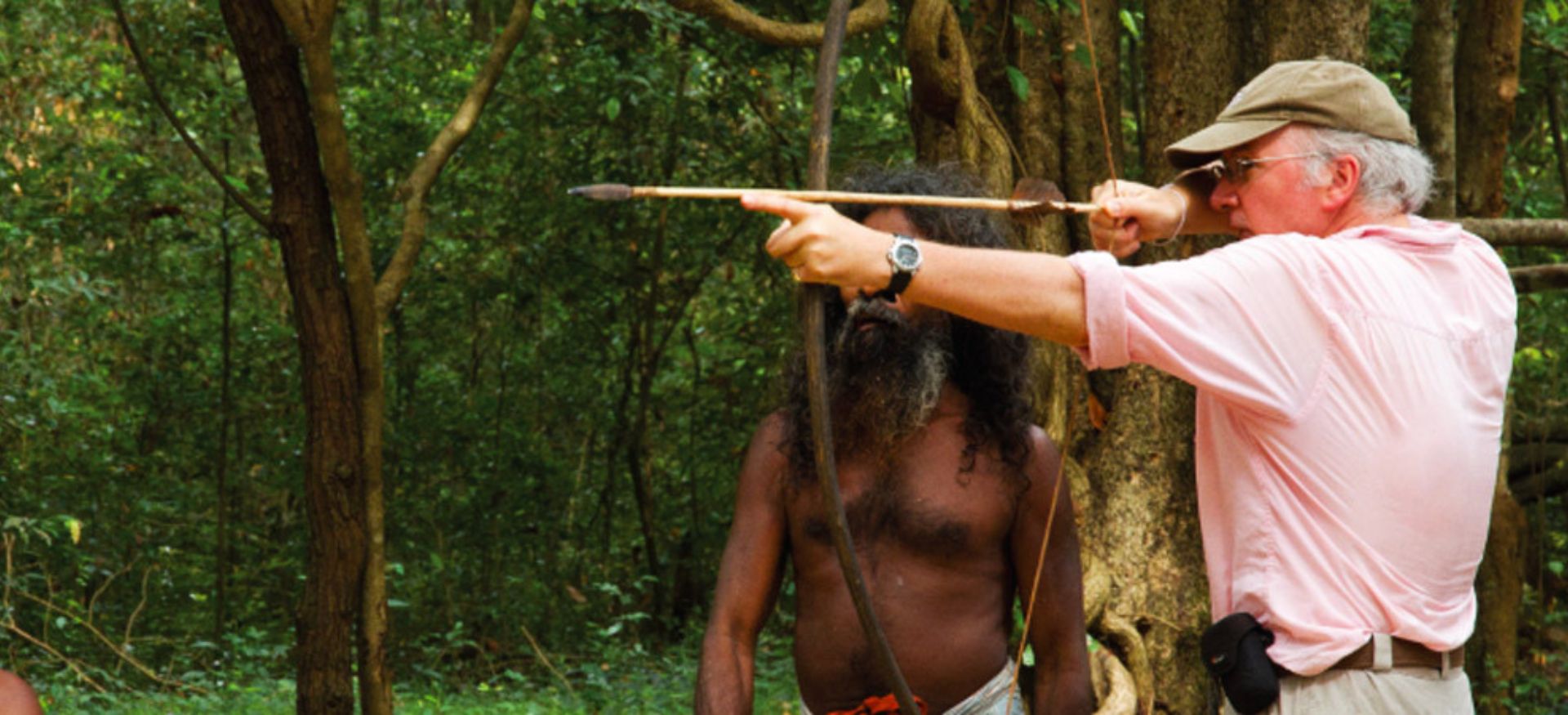

The Maduru Oya National Park
Just beyond the Wasgamuwa National Park, lies a jewel not quite caught in the limelight; the Maduru Oya National Park. Situated in the eastern province of Sri Lanka, it is a formidable expanse of over 58,800 hectares and home to wildlife, ruins and engineering feats.
While the Park finds itself in the dry zone, water systems here make up about 15% of the land area, including the five reservoirs of: Maduru Oya, Ulhitiya, Rathkinda, NDK, and Henanigala reservoirs, in addition to tributaries of the Mahaweli and Maduru Oya rivers.
What is significant about this Park is not just its biodiversity but its richness in being home to numerous endemic and endangered species, in particular. Elephants are a visible feature in the Park, and herds can be sighted quite frequently. Among the other residents are: the sloth bear, leopard, water buffalo, toque monkey, spotted deer, sambar, porcupine, Indian muntjac, jackal, fishing cat, wild boar, and several other smaller animals. This Park is one of the recorded habitats of the grey slender loris while the European otter has also been reported here.
Not to be outshone, the avifauna is also very varied and stunning to behold. The white-bellied sea eagle, great cormorant, the painted stork, the black-hooded oriole, woodpecker, and Sri Lanka’s national bird, the jungle fowl, and the malkoha, amongst others, make their presence evident - if not very audible. Interestingly, around the reservoirs, the Asian openbill, spot-billed pelican and the Oriental darter take centre stage, along with the black-headed ibis and the Eurasian spoonbill.
Moving around in an inconspicuous manner, are the water and common monitor, estuarine and mugger crocodile, the introverted Indian star turtle, and snakes such as the common cobra and black-tailed python. Giant gourami, catfish and snakeheads are just some of the fish found in the reservoirs.
The Park boasts of abundant dry zone vegetation. Weera, palu, buruta, kaluwara welang, ehela, kumbuk, milla, kone and fruits like beli and woodapple are all found here.
Amidst the sweeping landscape of Maduru Oya, you will suddenly encounter ruins, in places such as: Henanigala, Werapokuna, Gurukumbura and Uluketangoda - just to name a few. As in some of of Sri Lanka’s other national parks, constructs built in different eras of the island’s ancient past - still stand and evoke a majestic and imperial past. Foregone temples, statues, dagobas and hermitages will have you in wonderment. Dating from the 3rd century AD Brahmi inscriptions can also be seen at Kandegamakanda.
The Maduru Oya National is a drive of about 300 kilometres from Colombo, but it is a ride that will take you to an enduring wildlife experience… and don’t be surprised if you yearn for more...


